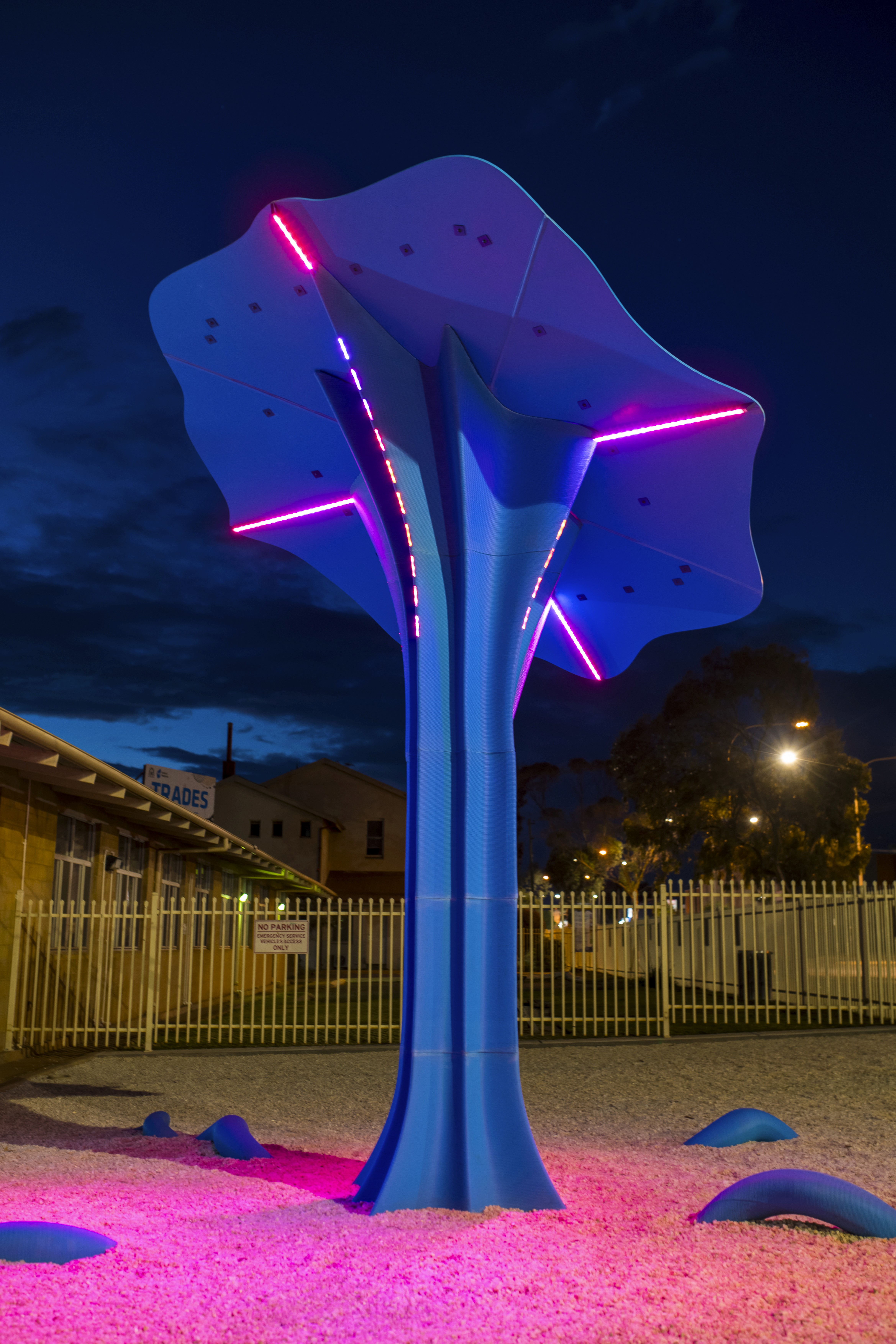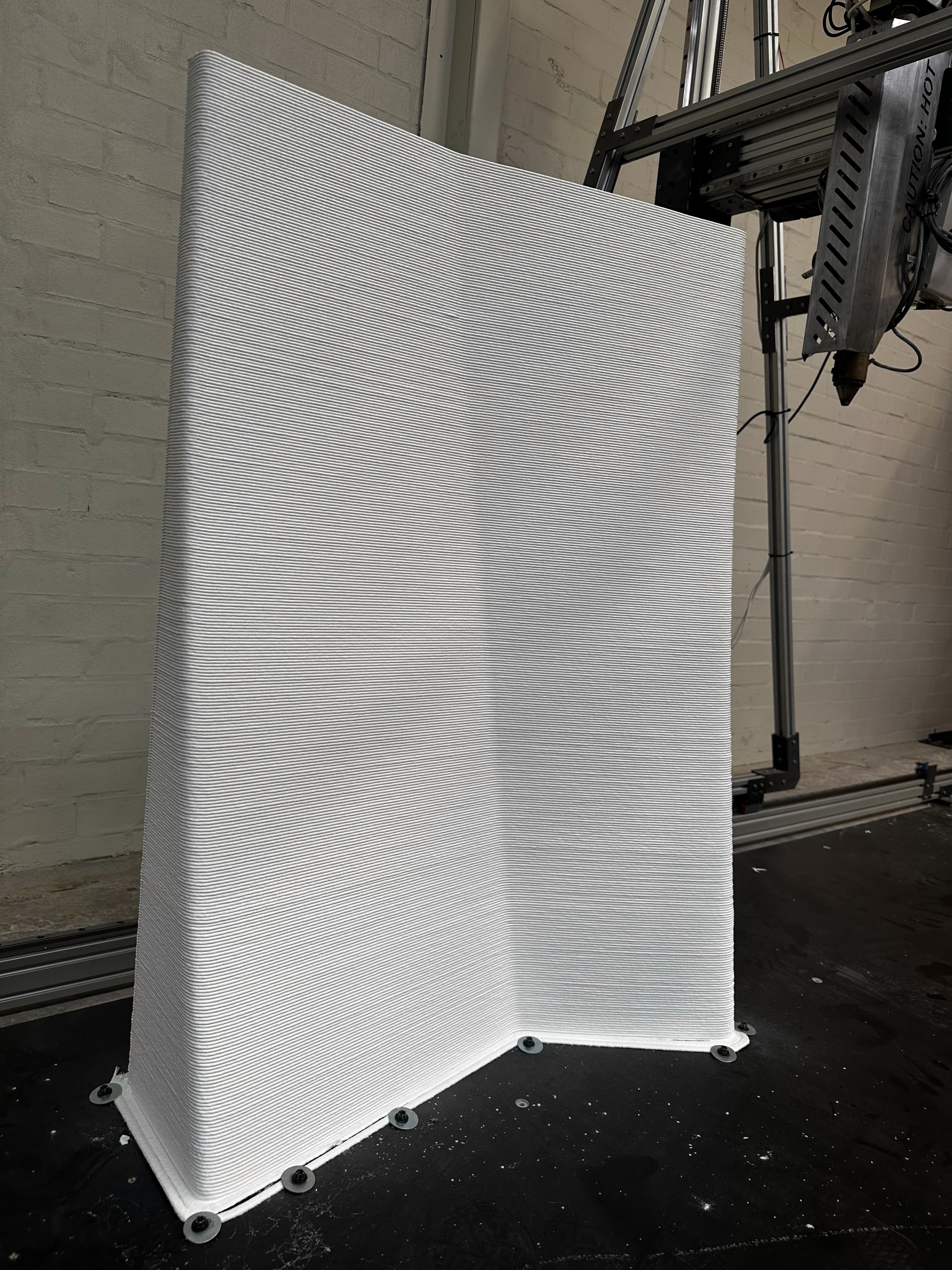Exploring the Benefits of Fused Granulate Fabrication
Back

Blog
What is Fused Granulate Fabrication?
Fused Granulate Fabrication (FGF) is an advanced additive manufacturing process that uses granular materials—usually thermoplastics or composites in pellet form—as feedstock. The pellets are melted in a heated chamber and extruded layer by layer to build large-scale or bespoke objects. This approach distinguishes FGF from Fused Filament Fabrication (FFF), which uses continuous thermoplastic filaments. While FFF is widely adopted for small-scale prototypes and household items, FGF is tailored for larger, more complex projects, offering greater material flexibility and scalability.
FGF is effective for specific applications in various industries due to its capacity to handle large-scale projects and complex geometries. In the marine industry, FGF excels in manufacturing objects like boat hulls, where its ability to process large volumes quickly and cost-effectively is crucial. It's also highly useful for creating moulds and tooling for industrial applications, offering rapid turnaround times and significant cost savings compared to traditional manufacturing methods. Additionally, in construction, FGF is advantageous for producing products like 3D printed concrete formwork, enabling complex architectural features to be constructed with greater efficiency and precision.
FGF Print Cross Section - Layers Are Strongly Bonded
FGF Pellets
FFF Filament
Cost-Effectiveness of FGF Compared to FFF
FGF offers a substantial cost advantage over FFF. While 1kg of filament may cost around $40, the same amount of pellet material used in FGF is likely to cost around $4. Bulk ordering by the tonne further enhances FGF's economic appeal compared to the more typical kilo-by-kilo purchasing in FFF, significantly reducing material costs.
The FGF Printing Process
FGF employs a mechanism like traditional extrusion and injection moulding, featuring a screw and barrel system. Dry pellets are introduced into a hopper and transported by an extrusion screw through various heating zones, melting before extrusion. This process, governed by pressure in the extruder, follows the contours set by 3D printing software.
Managing Material Properties
Achieving consistent print quality in FGF demands control over several factors, including pellet size and moisture content. Uniform pellet size enhances extrusion smoothness and layer adhesion, while moisture can cause gas bubbles during melting, leading to defects in the final product.
Comparison with Fused Filament Fabrication (FFF)
FGF surpasses FFF in material versatility and the ability to fabricate large, complex parts. It is particularly beneficial for materials that are either too rigid for winding or too soft for filament extruders. Furthermore, FGF eliminates the need for winding materials into coils, simplifying the printing process and reducing material costs.
Machine Types for Large-Format Additive Manufacturing with FGF
In the realm of large-format additive manufacturing (LFAM) with FGF, there are two primary types of machines:
• Robot-based Systems: These utilise a mobile robotic arm, enabling larger build sizes and the ability to handle complex geometries. Despite their flexibility and broad capabilities, such systems are expensive and technically demanding.
• Gantry-based Systems: These are prevalent due to their cost-effectiveness and simpler setup. Operating within a fixed frame, they are ideal for consistent geometries, providing faster printing speeds and greater accuracy but with restricted design flexibility.
FGF is revolutionising the possibilities of 3D printing by enabling the creation of large, complex designs with a high degree of material freedom. This technology not only enhances design flexibility but also reduces costs and increases scalability, significantly advancing the additive manufacturing industry.
Explore the potential of fused granulate fabrication with Hyperion Systems, a leader in large-scale 3D printing solutions. Whether you're looking to innovate in marine, construction, or design, Hyperion Systems provides cutting-edge technology and expert support to bring your visions to life. Contact us today to learn how we can assist you in pushing the boundaries of 3D printing technology.
Blog










